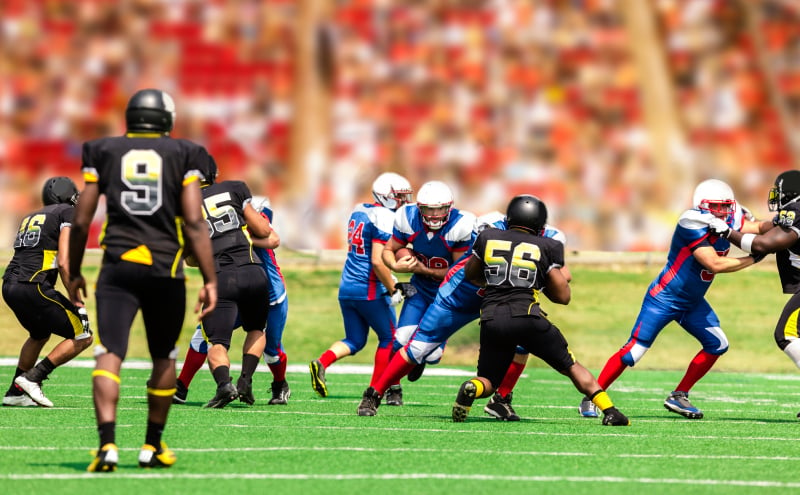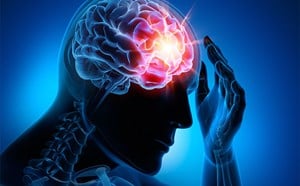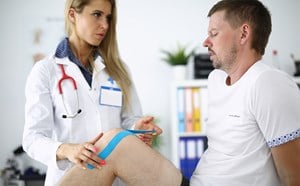
On-Field Emergencies
Vanica Guignard, MD
Medstar Health/Georgetown-Washington Hospital Center
R. Conner Dixon, MD, CAQ-SM
Attending Physician, Kaiser Permanente Santa Clara
Korin Hudson, MD, CAQ-SM
Professor of Clinical Emergency Medicine, Medstar Health/Georgetown-Washington Hospital Center
You’re on the field as the covering team physician for a local high school football game. The star wide-receiver has just completed a 45 yard catch-and-run play before he is tackled from behind in the endzone. He’s slow to get up and takes three steps towards the bench before he suddenly collapses on the field with a thousand fans watching from the stands.
The athletic trainer runs out to evaluate the player and within seconds waves you over. Your mind is racing as you run over to the athlete and see that he is unresponsive. You cannot appreciate adequate respiratory effort, and you call for the automated external defibrillator (AED) from the bench and tell the coach to activate the EMS crew who are waiting in the opposite endzone using the pre-arranged hand signals. The athletic trainer maintains inline cervical stabilization while the equipment manager removes the facemask exposing the airway and quickly cuts the jersey and fastening straps of the shoulder pads, opening them to expose the chest.
You begin chest compressions immediately and, as soon as the EMS crew arrives, one EMT attaches the AED and turns it on while the other places an oropharyngeal (OP) airway device and a non-rebreather on high flow for passive oxygenation. You continue chest compressions while the AED analyzes the rhythm. Defibrillation is advised, and a shock is delivered. CPR is resumed immediately, and you instruct the athletic trainer to take over compressions.
Still unsure if there was a significant injury due to trauma from the play, you help the EMTs quickly but carefully perform a six-person lift to maintain inline spinal stabilization while transferring the patient to a long spine board for extrication from the field. The patient is secured and transferred to the waiting cart, into the tunnel out of the view of the spectators, and towards the waiting ambulance. All the while, CPR is continued with minimal interruption.
At the next rhythm check, the AED notes “no shock advised” and recommends a pulse check. The patient has a carotid pulse, and you note spontaneous respiratory effort. Initial blood pressure is 76/50, but it is rapidly improving. The patient begins to gag on the OP airway (which you remove), and by the time you reach the ambulance, he is starting to moan and say some words. Over the next few minutes, an IV is established, a 12-lead monitor is placed, and a sinus rhythm is noted with frequent ectopy. The athlete is transferred to the ambulance and transported to the hospital for post resuscitation care.
|
DDx for traumatic causes of the collapsed athlete:
|
Box 1 - Differential diagnosis for traumatic causes of collapse in an athlete
DDx for atraumatic causes of the collapsed athlete:
|
Box 2 - Differential diagnosis of atraumatic or medical causes of collapse in athletes
Emergency Action Plan and Emergency Medicine in Sports
While cardiac arrests may seem rare in sporting events, an athlete suffers a cardiac arrest once every five days in the US. In addition to cardiac arrest, athletes can suffer catastrophic head injuries, cervical spine injuries, severe orthopedic injuries, life-threatening heat illness, and other medical crises which demand immediate medical attention. Therefore, it is important that the sideline medical staff are prepared for the worst case scenario at all times.
The Emergency Action Plan (EAP) creates a document that provides key information, including location of emergency equipment, critical contact information, egress routes, as well as policies and algorithms for care. Critical components of the EAP also include a checklist for key equipment (both present and in working order), as well as proper communication among key stakeholders. As such, each EAP will be unique to each site/environment, with slight differences between schools and even between venues or fields at the same school.
Emergency physicians (EPs) are uniquely suited for the role of sideline physician, due to the nature of our training. EPs are trained to think quickly in crisis situations, even when they have minimal background information. EPs are particularly adept at working quickly through differential diagnoses and treatment algorithms. Especially when combined with training in sports medicine, EPs have the ideal combination of skills to provide excellent sideline care for athletes in any sport.
|
Pearls:
Pitfalls:
|
Box 3 - Pearls and pitfalls associated with the emergency sideline care of athletes
References:
- Peterson DF, Kucera K, Thomas LC, et al. Aetiology and incidence of sudden cardiac arrest and death in young competitive athletes in the USA: a 4-year prospective study. Br J Sports Med. 2021 Nov;55(21):1196-1203.
- O'Connor FG, Brennan Jr, FH. Evaluation of the collapsed adult athlete. UpTodate. Last updated 2020.



